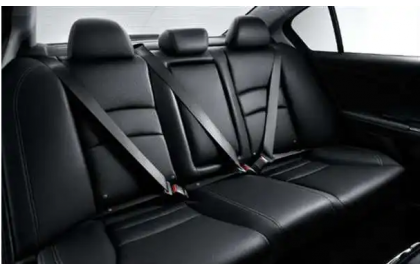Common sense for driving - the correct use of seat belts

The role of seat belts is to maximize the safety of drivers and passengers in the event of a car accident. According to the US NHTSA statistics, the use of full belts reduces deaths and serious injuries by 45% to 65%.
Correct and reasonable use of car seat belts is one of the main measures to ensure the safety of passengers while driving. The correct operation method is:
1. First adjust the position of the seat and choose the correct driving and riding posture.
2. Adjust the height of the fixed point of the seat belt according to the needs, so that the seat belt is located between the shoulders and neck, and passes through the appropriate position of the chest.
3. Slowly pull out the seat belt and insert it into the buckle. It is fastened when you hear a clicking sound.
4. After the seat belt is fastened, check whether it is tight to ensure reliable use.
5. When using the seat belt, the seat should not be tilted too far back to prevent the body from slipping out of the seat belt.
6. Press the button plug to release the seat belt.
The following points should be noted when using seat belts:
1. Always check the performance of the seat belt. In the process of using the seat belt, it is necessary to check whether there are cracks and gaps, whether the buckle can be locked, whether the fixed part is firm, etc. If any damage is found, it should be replaced in time. All bolts securing seat belts on the floor next to the seat should be tightened as specified, and sealant should be applied around the bolts.
2. Wearing the middle waist seat belt should be as low as possible, preferably on the hip, not on the waist; the shoulder belt should be oblique to the chest, and the seat belt should not be placed under the arm.
3. The seat belt should be properly tightened to prevent it from being too loose. Do not twist the seat belt for use. Do not wrap the package on the legs or wear thick clothes, so as not to cause the seat belt to be worn out of position and affect the normal function.
4. Do not let the seat belt press on hard or fragile objects, such as glasses, pens and keys in clothes, and do not let the seat belt rub on the edge to avoid damaging the seat belt; if the seat belt is attached with a convenient If the lock is locked, move away from the quick release lock while driving, and do not touch the quick release lock to hinder the movement of the lock tongue.
5. Adjust the seat. Do not allow the seat back to recline too much or the seat belt will not retract properly.
6. When there is no one on the seat, return the seat belt to the retractor, so that the buckle tongue is in the storage position, so as to prevent the buckle tongue from hitting other objects and being damaged during emergency braking.
7. If the seat belt has been subjected to a strong tensile load during use, even if it is not damaged, the assembly should be replaced, and it should not be used continuously.
8. Seat belts must be installed together with the seat, and must not be disassembled at will, and must not be exchanged between cars. No two people (children) may share a seat belt.
9. When the seat belt is too dirty, you can use soft soapy water as a cleaning solution, scrub with a cloth or sponge, do not use bleach, otherwise it will corrode the seat belt, and do not use a hard brush to clean it, so as not to reduce the tensile strength of the seat belt.
